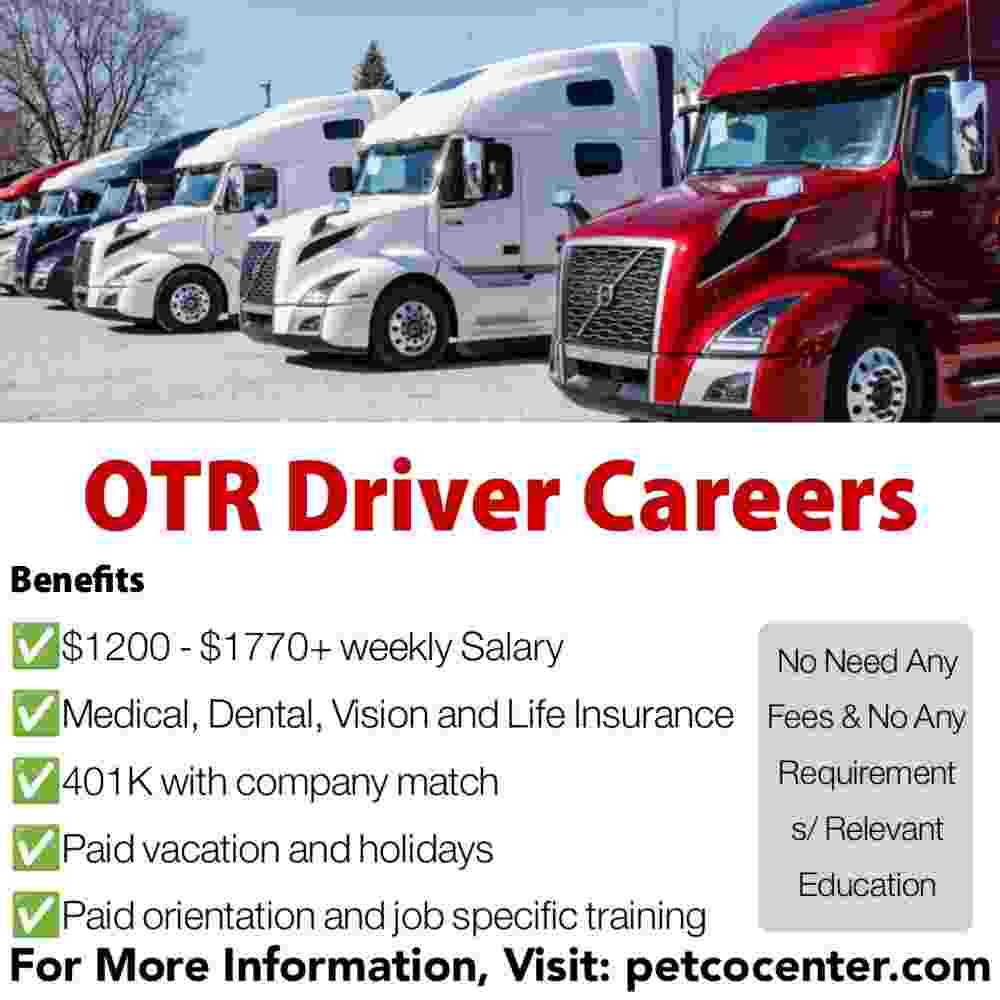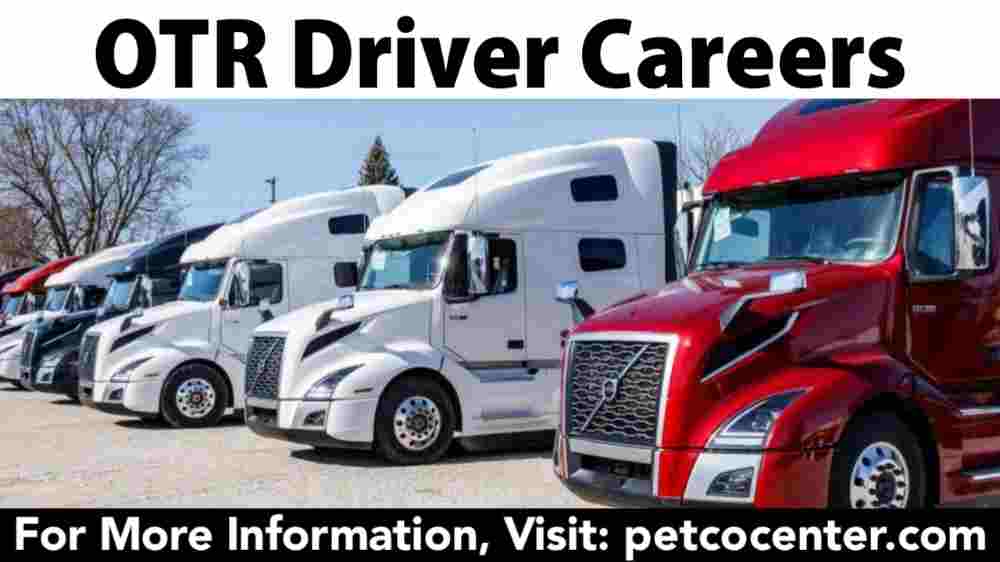OTR Driver Careers Over-the-Road (OTR) driving, also known as long-haul trucking, is a vital and challenging profession that plays a significant role in keeping goods moving across the country. OTR drivers are the backbone of the trucking industry, transporting goods over long distances and connecting businesses and consumers. This article delves into the world of OTR driver careers, exploring the opportunities, challenges, and rewards of this demanding yet rewarding profession. Reed more…
How to become an OTR driver?
Becoming an OTR (Over-the-Road) driver requires a series of steps and qualifications. Here’s a step-by-step guide to help you pursue a career as an OTR driver:
- Obtain a Regular Driver’s License: Before starting your journey to become an OTR driver, ensure you have a regular driver’s license and a clean driving record. Most OTR driving programs require applicants to have a valid driver’s license.
- Research OTR Driving Requirements: Different regions or countries may have specific requirements for OTR drivers. Research the specific regulations and qualifications needed in your area to ensure you meet all the necessary criteria.
- Obtain a Commercial Driver’s License (CDL): A CDL is a requirement for operating commercial vehicles, including OTR trucks. To obtain a CDL, you’ll need to attend a CDL training program at a certified driving school or vocational institution. These programs provide classroom instruction and hands-on training, preparing you for the CDL exam.
- Pass the CDL Exam: The CDL exam consists of both written and practical (driving) tests. The written portion assesses your knowledge of traffic laws, safety regulations, and vehicle operation. The practical test evaluates your driving skills, including pre-trip inspections, basic maneuvers, and on-road driving.
- Gain Experience: Many OTR companies prefer experienced drivers. To gain experience, start with local or regional trucking jobs, which often require less time away from home. Building a solid track record of safe driving and professionalism will enhance your chances of securing an OTR driving position later.
- Meet Specific Qualifications: OTR drivers must meet certain qualifications, including age requirements (usually at least 21 years old), clean driving records, and good physical health. Some companies may have additional requirements, so check with potential employers for specific details.
- Consider Special Endorsements: Some OTR driving jobs may require additional endorsements on your CDL, such as hazardous materials (HAZMAT) or tanker endorsements. These endorsements allow you to transport specialized cargo and open up more opportunities.
- Apply for OTR Driving Jobs: Once you have your CDL and sufficient experience, start applying for OTR driving positions with reputable trucking companies. Tailor your resume to highlight your relevant experience and qualifications for OTR driving.
- Attend Interviews and Pre-Employment Training: If selected for interviews, make sure to demonstrate your commitment to safety, responsibility, and reliability during the interview process. Some companies may require pre-employment training before assigning you a route.
- Embark on Your OTR Driving Career: Once hired, you’ll begin your journey as an OTR driver. Be prepared for long hours on the road, time away from home, and the challenges and rewards that come with this unique career path.
Remember, OTR driving requires dedication, responsible driving habits, and a commitment to safety. With the right training, experience, and a strong work ethic, you can successfully embark on an exciting and rewarding career as an OTR driver.

The Essence of OTR Driver Careers
OTR driving involves transporting goods between states and across the country, making it one of the most crucial aspects of the trucking industry. These professionals cover vast distances, often spending days or even weeks away from home. This lifestyle requires a unique set of skills, qualities, and a strong commitment to deliver goods safely and on time.
The Journey to Becoming an OTR Driver
- Obtaining a Commercial Driver’s License (CDL): The first step towards an OTR driver career is obtaining a CDL, which is a requirement for operating commercial vehicles. CDL training programs teach aspiring drivers the necessary skills and knowledge to navigate the roads safely.
- Gaining Experience: Many OTR companies prefer experienced drivers due to the nature of the job. Aspiring OTR drivers often begin with local or regional trucking jobs to gain valuable experience before taking on long-haul routes.
- Meeting Qualifications: OTR drivers must meet specific qualifications, including age requirements, driving records, and physical fitness. Meeting these qualifications is essential to secure a position in this competitive industry.
Exploring Opportunities in OTR Trucking
- Variety of Goods Transported: OTR drivers have the opportunity to transport a wide range of goods, from consumer products to industrial equipment. This variety keeps the job dynamic and interesting.
- High Demand for OTR Drivers: The trucking industry faces a shortage of qualified drivers, leading to a high demand for OTR drivers. This demand translates to competitive salaries and benefits for skilled drivers.
- Job Stability: As long as the economy relies on the transportation of goods, OTR drivers will remain in demand, providing a stable career path for those willing to put in the hard work.
The Life of an OTR Driver
- Embracing the Open Road: OTR drivers experience the freedom of the open road, witnessing breathtaking landscapes and exploring diverse regions of the country.
- Long Hours and Time Away from Home: OTR drivers often work long hours and spend extended periods away from their families and loved ones. This aspect of the job can be challenging but is mitigated by the opportunity to explore new places during rest periods.
- Balancing Safety and Efficiency: OTR drivers must balance safety and efficiency while delivering goods on time. Adhering to regulations and maintaining a responsible driving approach is critical to success.
Thriving in OTR Driver Careers
- Time Management: Effective time management is essential for OTR drivers to meet delivery schedules, comply with regulations, and allocate time for rest and relaxation.
- Communication Skills: OTR drivers must communicate with dispatchers, shippers, and receivers effectively, ensuring smooth operations and addressing any challenges that may arise during their routes.
- Maintaining Work-Life Balance: Finding ways to maintain a work-life balance is crucial for OTR drivers. Staying connected with loved ones while on the road and using rest periods wisely can help in achieving this balance.
Advancements in OTR Trucking
- Technology in Trucking: OTR trucking is evolving with the integration of advanced technologies, such as GPS navigation systems, electronic logging devices (ELDs), and telematics. These technologies enhance safety and efficiency on the road.
- Environmental Initiatives: Trucking companies are increasingly adopting environmentally friendly practices, such as using alternative fuels and optimizing routes to reduce emissions and carbon footprints.
Conclusion:
OTR driver careers offer a unique and fulfilling experience for those who enjoy the freedom of the open road and have a passion for the trucking industry. Despite the challenges, the demand for skilled OTR drivers continues to grow, providing ample opportunities for a stable and rewarding career in the ever-evolving world of trucking. So, for those seeking adventure, a strong work ethic, and a desire to connect the nation through transportation, OTR driving presents an exciting and promising path to success.
